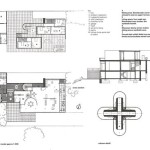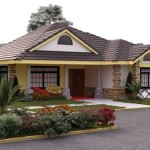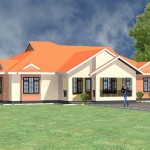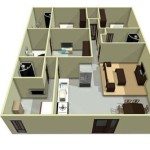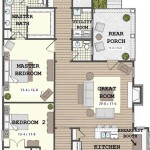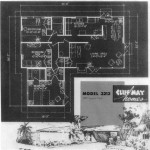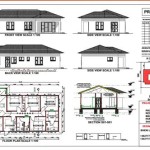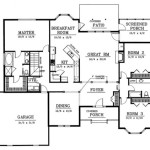Swiss Family Robinson Treehouse Plans: A Comprehensive Guide
The Swiss Family Robinson tale, a classic of survival and ingenuity, has captured the imaginations of generations. A central element of their resourceful existence is the elaborate treehouse they construct, providing shelter, security, and a commanding view of their island environment. The concept of a "Swiss Family Robinson treehouse" has evolved beyond a fictional dwelling to represent a pinnacle of arboreal architecture and self-sufficiency. This article explores the key elements of such a treehouse, focusing on the planning aspects necessary to create a similar structure in a modern context. While replicating the exact circumstances of the Robinson family is unlikely, understanding the principles behind their treehouse design can inspire innovative and sustainable building practices.
The popularity of the Swiss Family Robinson treehouse is attributable to its embodiment of resourcefulness and adaptation to its environment. The treehouse is not just a shelter; it is a testament to the family's ability to utilize natural materials, overcome challenges, and create a comfortable and secure living space. Modern interpretations of the treehouse idea often aim to capture this spirit, incorporating sustainability, creativity, and a connection with nature.
Key Point 1: Site Selection and Tree Assessment
The first and most crucial step in developing Swiss Family Robinson treehouse plans is the meticulous selection and assessment of the trees intended to support the structure. This process involves a thorough understanding of tree species, health, and structural integrity. Not all trees are suitable for supporting a treehouse, and choosing the wrong tree can lead to structural instability and potential collapse.
Ideal tree species for treehouse construction are typically hardwoods known for their strength and longevity. Oak, maple, and beech trees are examples of robust species that can withstand the weight and stresses associated with a treehouse. Softwoods, such as pine and fir, are generally less suitable due to their lower density and susceptibility to decay. However, with proper treatment and reinforcement, certain softwood species can be incorporated into the design in conjunction with hardwood supports.
The health of the tree is paramount. A certified arborist should conduct a professional assessment to identify any signs of disease, decay, or structural weaknesses. The assessment should include a visual inspection of the trunk, branches, and root system. Indicators of potential problems include fungal growth, cavities, dead or dying branches, and signs of insect infestation. Any tree exhibiting significant health issues should be excluded from consideration.
Structural integrity is another critical factor. The tree must have a strong and well-developed branching structure to provide adequate support for the treehouse platform. The diameter of the trunk and branches should be sufficient to bear the intended load, and the angles of the branches should be conducive to distributing weight evenly. Trees with excessively steep or shallow branch angles may be less stable and more prone to failure.
Beyond the structural considerations, site selection also involves evaluating the surrounding environment. The treehouse should be situated in a location that minimizes environmental impact and respects the natural habitat. Factors to consider include proximity to water sources, sensitive ecosystems, and neighboring properties. Accessibility is also an important consideration, as the treehouse should be easily accessible for construction, maintenance, and occupancy. The prevailing wind direction and sun exposure should be analyzed to optimize the treehouse's microclimate and energy efficiency.
Once a suitable tree or group of trees has been identified, a detailed survey should be conducted to map the tree's dimensions, branch angles, and surrounding topography. This survey will provide the basis for developing accurate and detailed treehouse plans.
Key Point 2: Treehouse Attachment Methods and Load Distribution
The method by which the treehouse is attached to the tree(s) is critical for ensuring both the structural integrity of the treehouse and the long-term health of the trees. Traditional methods, such as bolting directly into the tree trunk, can cause significant damage and impede the tree's growth. Modern treehouse construction techniques emphasize non-invasive attachment methods that minimize stress on the trees and allow for natural movement.
One common approach is the use of Treehouse Attachment Bolts (TABs), which are specially designed bolts that are inserted into the tree trunk at an angle to provide a secure connection point. TABs are typically made of high-strength steel and are designed to distribute the load evenly across the tree's fibers. They are often used in conjunction with a floating platform, which allows the treehouse to move independently of the trees during windstorms or growth.
Another approach is the use of suspension systems, which involve suspending the treehouse platform from the tree branches using cables, ropes, or chains. Suspension systems are particularly well-suited for treehouses that are supported by multiple trees, as they allow for a degree of flexibility and movement between the trees. These systems require careful engineering and precise installation to ensure that the load is distributed evenly and that the treehouse remains stable.
Regardless of the attachment method used, it is essential to consider the long-term growth of the trees. As the trees grow, the attachment points will need to be adjusted to accommodate the increasing trunk and branch diameters. Regular inspections should be conducted to monitor the attachment points and make any necessary adjustments. The materials used for the attachment system should be durable, weather-resistant, and compatible with the tree species.
Load distribution is another critical aspect of treehouse design. The weight of the treehouse, including its occupants and contents, must be distributed evenly across the supporting trees to prevent overloading any single branch or trunk. This can be achieved through careful planning of the platform layout, the placement of support structures, and the use of lightweight building materials.
The use of triangular bracing and other structural reinforcements can help to distribute the load and increase the overall stability of the treehouse. The design should also consider the potential for wind loads and snow loads, which can exert significant forces on the structure. Proper drainage should be incorporated into the design to prevent water accumulation and reduce the risk of rot and decay.
Key Point 3: Material Selection and Sustainable Building Practices
The choice of materials for a Swiss Family Robinson treehouse should reflect a commitment to sustainability and environmental responsibility. The Robinson family utilized readily available natural materials, such as wood, vines, and leaves. While replicating their exact methods may not be feasible in a modern context, the principle of using locally sourced, renewable, and environmentally friendly materials remains a cornerstone of responsible treehouse design.
Wood is the primary building material for most treehouses. However, the type of wood used can have a significant impact on the environment. Sustainable forestry practices, such as those certified by the Forest Stewardship Council (FSC), ensure that timber is harvested in a responsible manner that protects biodiversity and minimizes deforestation. Reclaimed wood is another excellent option, as it reduces the demand for new timber and gives a new life to materials that would otherwise be discarded.
In addition to wood, other natural materials can be incorporated into the treehouse design. Bamboo is a fast-growing and renewable resource that can be used for flooring, walls, and roofing. Natural fibers, such as hemp and jute, can be used for ropes, netting, and insulation. Clay and straw can be used to create earthen plasters and walls, providing excellent thermal mass and a natural aesthetic.
The use of synthetic materials should be minimized or avoided altogether. Plastics and other synthetic materials are often derived from fossil fuels and can have a negative impact on the environment. When synthetic materials are necessary, choose recycled or bio-based alternatives whenever possible.
Sustainable building practices extend beyond material selection. During construction, minimize waste by carefully planning material usage and recycling any leftover materials. Use non-toxic paints, stains, and finishes to protect both the environment and the health of the occupants. Incorporate energy-efficient features into the design, such as passive solar heating, natural ventilation, and rainwater harvesting.
The goal of sustainable treehouse design is to create a structure that minimizes its environmental footprint and blends seamlessly with its natural surroundings. By carefully considering the materials used, the construction methods employed, and the long-term impact on the environment, it becomes possible to build a treehouse that is both beautiful and sustainable.
Planning also includes incorporating access and egress to/from the treehouse. The Swiss Family Robinson likely used rope ladders and vines. While innovative, these may not be the safest options for permanent structures. Plans must take into account the best methods for safely accessing the treehouse, likely through a series of stairs, rope bridges, or ladders with safety restraint systems. Considerations of the occupant's physical limitations are important. Also, emergency egress methods must be incorporated in case the main access route is blocked.
Finally, plans must consider the integration of modern utilities, such as electricity, plumbing, and internet connectivity, into the treehouse, while minimizing their impact on the trees and the environment. Electrical wiring should be carefully routed and protected to prevent damage from weather or animals. Plumbing should be designed to conserve water and prevent leaks. Internet connectivity should be provided through wireless technology or buried cables to avoid disturbing the trees.

Swiss Family Treehouse Model Imagineering Disney

Swiss Family Treehouse Model Imagineering Disney

Swiss Family Treehouse Model Imagineering Disney

Swiss Family Robinson Treehouse Blueprints Google Search Tree House

Swiss Family Concept Art Revealed For The Disneyland Treehouse

Let Stiles Designs Build You A Swiss Family Robinson Tree Fort House Drawing

The History Of Swiss Family Treehouse And Adventureland

Disney Byways Swiss Family Robinson Treehouse The Solute

Swiss Family Treehouse Robinson The Walt Disney Wiki Fandom

Swiss Family Robinson Treehouse Tour Susan S Homeschool Blog

